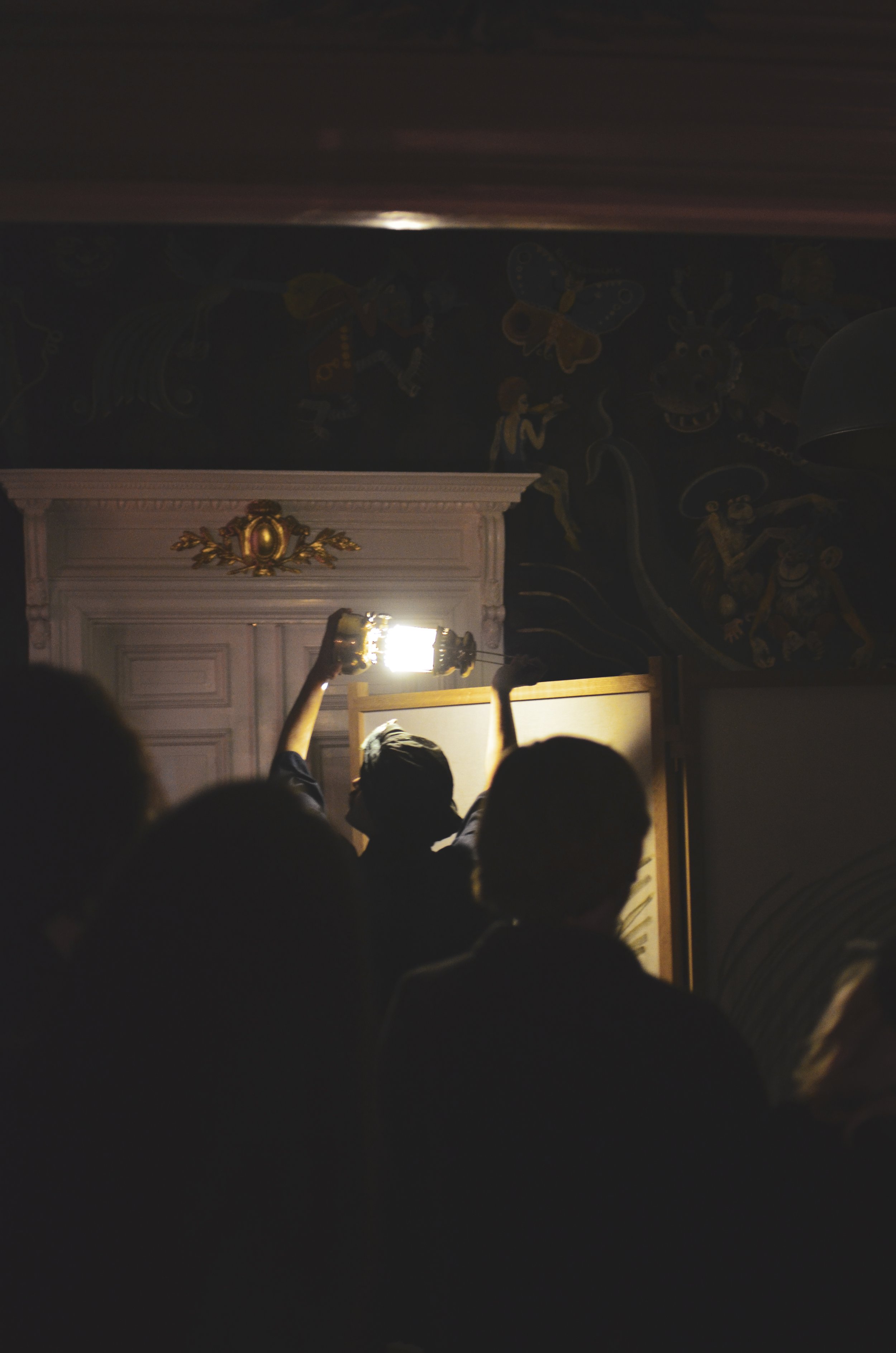Through the Tall Grass (2023)
Performance, 15 minutes per act
Trigger warning: documentation contains racist imagery from a 1930’s mural depicting black bodies.
Nalen (previously called the National palace) is a concert venue primarily associated with the golden age of jazz in Sweden, often referred to as Stockholm’s “Harlem” It was the epicenter of Stockholm’s nightlife with concerts, jazz, and underground burlesque shows from the 1930’s-1960’s.
Through the tall grass (2023) is a piece of silent theatre, a shadow play, a craftsman's strip tease intended to elevate the mundane and repetitive task of dressing and undressing every day. In the exhibition Into the Long Night this performance is used to illuminate Nalen's bar and back rooms which retain their outsider art wall paintings from the 1930's. The aim is to activate a historical space and insert my own mixed race body into Nalen's long tradition of burlesque and performances. The performance is accompanied with a letter titled Dear Joséphine Baker, an acknowledgment of the complexities of performing the “exotic”.
In this version of Through the Tall Grass a Japan is heavily featured, the result of a four month cultural exchange where I was schooled in traditional craft techniques in Tokyo and Tsukuba. All the clothing worn during the performance is hand stitched with antique kimono silk, modeled after mompei-pants, yukata, buddhist/hindu paduka; sandals carved from hinoki (japanese cypress). By playing on my Indian heritage and mixing it with a Japanese aesthetic I’m character building toward an expression which is generally “exotic”, just as Asian cultures were historically lumped together as “Oriental”.
In Into the Long Night, 11 paintings are exhibited in addition to the static installation that acts as remnants from the performance on the vernissage evening. Day/Night paintings of Grass (2023) are two-sided paintings made using oak frames, elm wood panels (cut down in central Stockholm on Skeppsholmen), urushi lacquer, 24k gold leaf, and home-made oil paints. The gilded side of the paintings are brushed with a technique called “uzukuri”, where the natural patterns in the wood are revealed by vigorous brushing with a brush made of dried roots from rice plants, and then polishing with a horsehair brush. The oak frames are made using wedge joints from a handbook in house-building.
Josephiné baker



Photos on film taken by Dolgion & Anna Harström
Installation photos taken by Felicia Berlin and Karin Bernhardsson

























